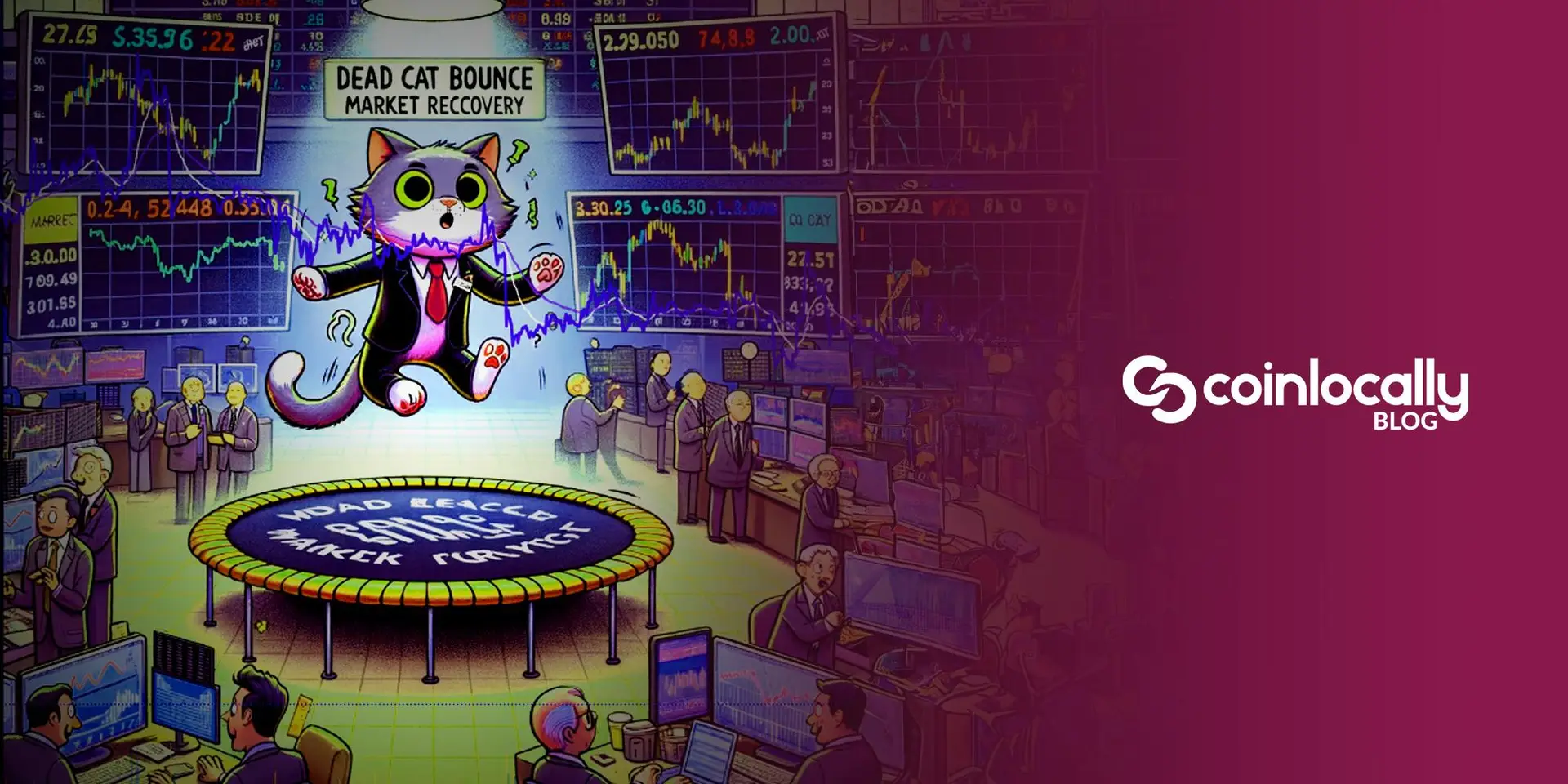
Dead Cat Bounce
What Is a Dead Cat Bounce?
A Dead Cat Bounce is a temporary recovery in the price of a declining asset, such as a stock or cryptocurrency, that is followed by a continued downward trend. This short-lived rebound can mislead traders into believing a market has bottomed out when, in reality, the broader decline is not yet over.
The term is often used in bearish markets and reflects false optimism. Investors may interpret a small price rally as the start of a larger recovery, only to see prices fall again soon after.
Origin of the Term
The phrase “Dead Cat Bounce” comes from the idea that even a dead cat will bounce if it falls from a significant enough height. In financial markets, this graphic metaphor underscores the deceptive nature of small recoveries during a prolonged downtrend.
Although it may seem crude, the term has become common in traditional finance and crypto trading to describe deceptive or misleading market movements.
How a Dead Cat Bounce Works
Short-Term Rally in a Long-Term Downtrend
Prices may suddenly bounce back during a bear market or after a sharp sell-off. This quick rally is often driven by short covering, speculative buying, or traders reacting to what appears to be a low-risk entry point. However, this move lacks real strength or sustained momentum.
Once the bounce loses steam, the asset resumes downward movement, often falling to new lows. This pattern traps traders who bought in during the bounce, thinking the worst was over.
Key Characteristics
- Occurs after a sharp decline
- A brief upward movement in price
- Followed by continued downside
- Often accompanied by low volume or weak fundamentals
Dead Cat Bounce in Crypto
Due to cryptocurrency markets’ high volatility, Dead Cat Bounces are pretty standard. Bitcoin, Ethereum, and altcoins often experience sharp price drops followed by small rallies that look like recoveries. These bounces can trap unsuspecting traders and lead to further losses.
Crypto traders closely watch volume, trend confirmation indicators, and macroeconomic signals to distinguish between an actual trend reversal and a Dead Cat Bounce.
How to Avoid Getting Trapped
Wait for Confirmation
Confirming that the recovery has real strength is essential before entering a trade based on a bounce. Traders often wait for sustained volume increases or moving average crossovers before committing.
Use Stop-Loss Orders
Managing risk is key when trading volatile markets. Setting stop-loss levels can help reduce losses if the bounce proves to be temporary.
Combine Indicators
Relying on multiple indicators, such as RSI, MACD, or trendlines, can help identify whether a bounce is genuine or likely to fail. The more confirmation you have, the less likely you will fall for a false signal.
Final Thoughts about Dead Cat Bounce
A Dead Cat Bounce is a classic market trap that can fool even experienced traders. It appears as a sign of recovery, but often ends in continued losses. Recognizing the warning signs and using sound risk management can help you avoid making costly decisions based on short-term price action.
Understanding this concept is essential for navigating bear markets with greater confidence and caution, both in traditional finance and crypto.
